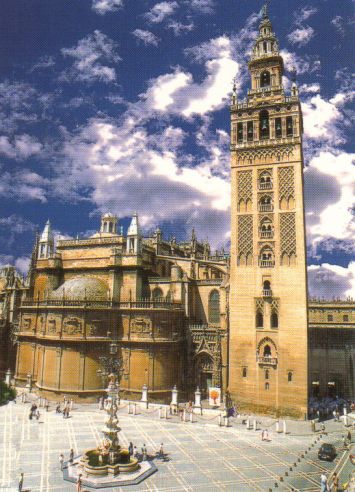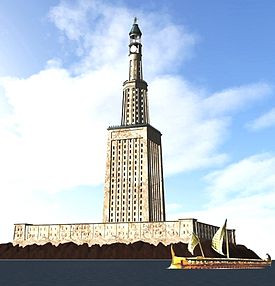Here in Seville, we know things are starting to get bad socially and economically when individual recyclers, or families of, raid the recycling bins. It is a shameful sight to see people of all ages rummaging through bins for food, clothing and anything that they might be able to sell in order to eke out their existence.
At the apex of this rather scandalous pyramid of poverty are the paper recyclers. To join this band you need a Ford Transit (or similar) with or without insurance or MOT - fines for lack of documentation go unpaid due to the fact that that those sanctioned can plead poverty and that they are unable to pay.
Next come the scrap metal scavengers, usually with nothing more than a shopping trolley to transport their prizes.
Finally come the household refuse collectors, armed with a hooked stick to rummage through the dumpsters and to rip open the bin bags without having to dirty themselves any more than is necessary. They are in search of - what? Food, I most definitely hope not. These people will be looking for anything saleable - old toys, books, clothes, whatever. Strangely enough, this class of scavenger might have a scooter or a bicycle with a trailer - some still even have the family car as cars are now unsaleable - everyone has one and quite a few people are trying to sell theirs to get some money to scrape by.
Today my interest lies in the second group - the scrap collectors because this is where recycling, a supposedly environmentally friendly activity, turns into a dangerous and highly polluting one.
Until relatively recently, labour was quite a small cost in the production of any article - witness the great buildings from Roman times - until, I would argue, the early to mid-20th century. Could we possibly imagine how much manual (slave) labour went into any Roman building? Imagine the millions of terracotta tiles, shaped by hand over moulds, that were needed to roof the impressive (hand-carved) (hand-quarried) stone and (handmade) brick buildings of the Roman Empire.
 |
A truly striking portico and façade
(photo courtesy of Wikipedia) |
A striking and more modern example of such intensive labour here in Seville would be the portico of Seville's 17th-century Palacio de San Telmo. It took father and son sculptors, Matías and Antonio Matías Figueroa fifteen years to complete.
Such an undertaking nowadays would clearly be economic madness, although using modern scanning technology and automated carving, it could no doubt be reproduced at a fraction of the cost and in a matter of weeks. The most expensive input now would probably be the stone.
 |
La Giralda. the steles are to be found at
the right-hand corner of the base.
(photo courtesy of losmejoresdestinos.com) |
Humankind has been recycling ever since the first humanoid picked up a bone from his last meal and bashed someone over the head with it - from bone to bone-crusher in one fell swoop of all too-human intuition.
Staying in Seville, most of the older brick buildings in the city were made with Roman bricks quarried from the nearby Roman ruins of Italica. Indeed, the cathedral's Moorish belltower, La Giralda, was built using such bricks and at ground level we can even see some marble Roman steles. We can therefore surmise that in those times input costs in descending order would have been: materials/ transport/labour.
Nowadays, and in general terms, that order has changed and has become labour/transport/ materials in the developed world and transport/labour/materials in the developing world, although the latter two might very well be interchangeable.
Yet it is only right that labour should be paid a fair and living wage. We are talking about people, about families. About society.
But I digress. Last week (the trigger for this article) I saw a scrap metal scavenger pulling yards and yards of copper wiring from a skip -obviously for re-sale (at a pittance) to scrap metal dealers. Everyone knows that scrap is bought by weight and that therefore the plastic will be heavily discounted from the price paid. So how to maximise the price? By stripping the wire of its plastic (usually PVC, if it's old wiring - which logically it will be). Anyone who has stripped even a small length of wire knows how arduous and time-consuming such a task is, so I am sure that you too, dear reader, have already hit upon the most efficient solution - burn the plastic off. This obviously releases noxious, highly poisonous gases, harmful to both the environment and to the incendiaries themselves. Furthermore, such activities will also blight the ground beneath the fire and in summer months might even lead to larger, uncontrollable, bush fires.
Another, similar, case is the scavenging of old fridges. No economically "sensible", scrap merchants will accept a fridge full of CFCs which they will then have to re-process according to legal requirements. Again, the solution is obvious: smash open the cooling system in the street so that when it arrives at the scrapyard, it is CFC-free.
Thankfully, and probably due to the fact that the cost of recycling is included in the price of new tyres, tyre-burning to recover the steel inside is now uncommon. Furthermore, the plumes of dense, black smoke can be seen from a long way off and will thus alert the authorities. Until about ten years ago tyres were the fuel of choice in the brick fields beside the Guadalquivir when starting up the brick kilns. These bricks, incidentally, still used the same - or same-size moulds as those used in Roman times.
The riverine brick kilns are now a thing of the past, but: how can we make such uncontrolled recycling a thing of the past too? That is a knottier problem, but one which requires society to recycle the people it throws onto the scrap heap instead of obliging them to lose their dignity and become members of an underclass that the rest of us hardly see as we go about our daily lives, blithely oblivious to the fact that it only takes a small chain of personal economic disasters to find ourselves in the same degrading position.
















